Looking for the perfect
Product Market Fit?
Use the right model...


You reached Flavio's blog on business model exploration.
no obligations,
just conversations.
If you are struggling to find the perfect product-market fit
probably you are using the wrong model.
It's not your fault. You have been conditioned to use it by legends around
Henry Ford saying: “If I asked people what they wanted, they would have said a faster horse.”, or
Steve Jobs adding: “People don’t know what they want until they see it.”
People then start to look around latent needs...
and then using Osterwalder's model explicitng those needs into: Pain & Gain.
Unfortunatelly there is nothing like a "latent pain",
and customer has no urgency in finding a "latent gain".
We should talk about "latent loss"
When a salesman try to sell an existing solution,
he should uncover the latent "loss"
that the customer is not (yet) aware of.
When we ask about the needs,
the innovator asks about a "latent gain"
not about a "latent loss"
Unfortunatelly "gaining" is not something urgent to customers.
even because - as Tony Ulwick says - the customer has not the ability to create a step changing solution. So he falls in asking a (continuos) improvement of the existing one.
My experience is that talking about "pain" is misleading.
Pain is a sympthom, not a measure of value.
When I see people gasping in finding "product-market fit" it's becasue they search for pain & gain.
Unfortunately pain is not the contrary of gain.
Loss is it.
look of latent loss(1), ( and - if you are an inventor- latent gain )
not for latent pain.
When looking at it, I would reccommend to take these 3 steps:
Continue reading to learn more.
1) A big tree shadowing your house could be a latent loss, if it is too close to the house.
A storm can smash it into the house. When you realize this you may want to hire a gardner to prune the tree...
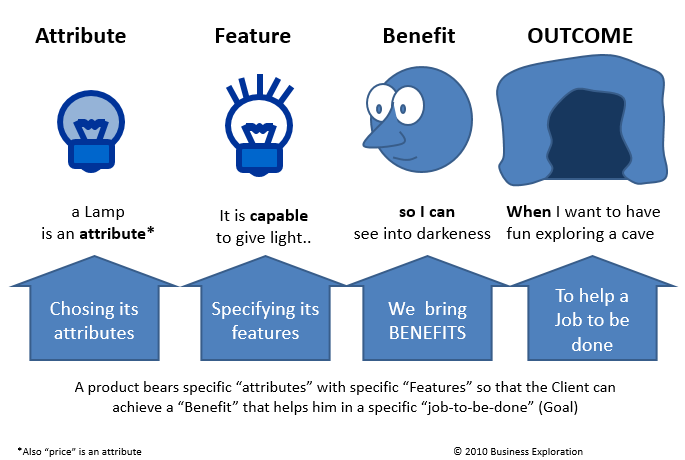
I always used to distinguish between:
Note that Job-To-Be-Done outcomes are defined by LOSS & GAINS, not by "Pain & Gains".
A Customer will always be moved by the fear of Loss.
A Customer is always prepared to tolerate a Pain: it's about underperformance, it's about less profit.
What a Customer will not tolerate is the Loss of Capital, it's the loss of her role in the industry. it's the loss of investments.
Customers don't tolerate Loss, in a ratio 2 to 1 against how much she will love a Gain.
Said that, lately I end up adding two further points:
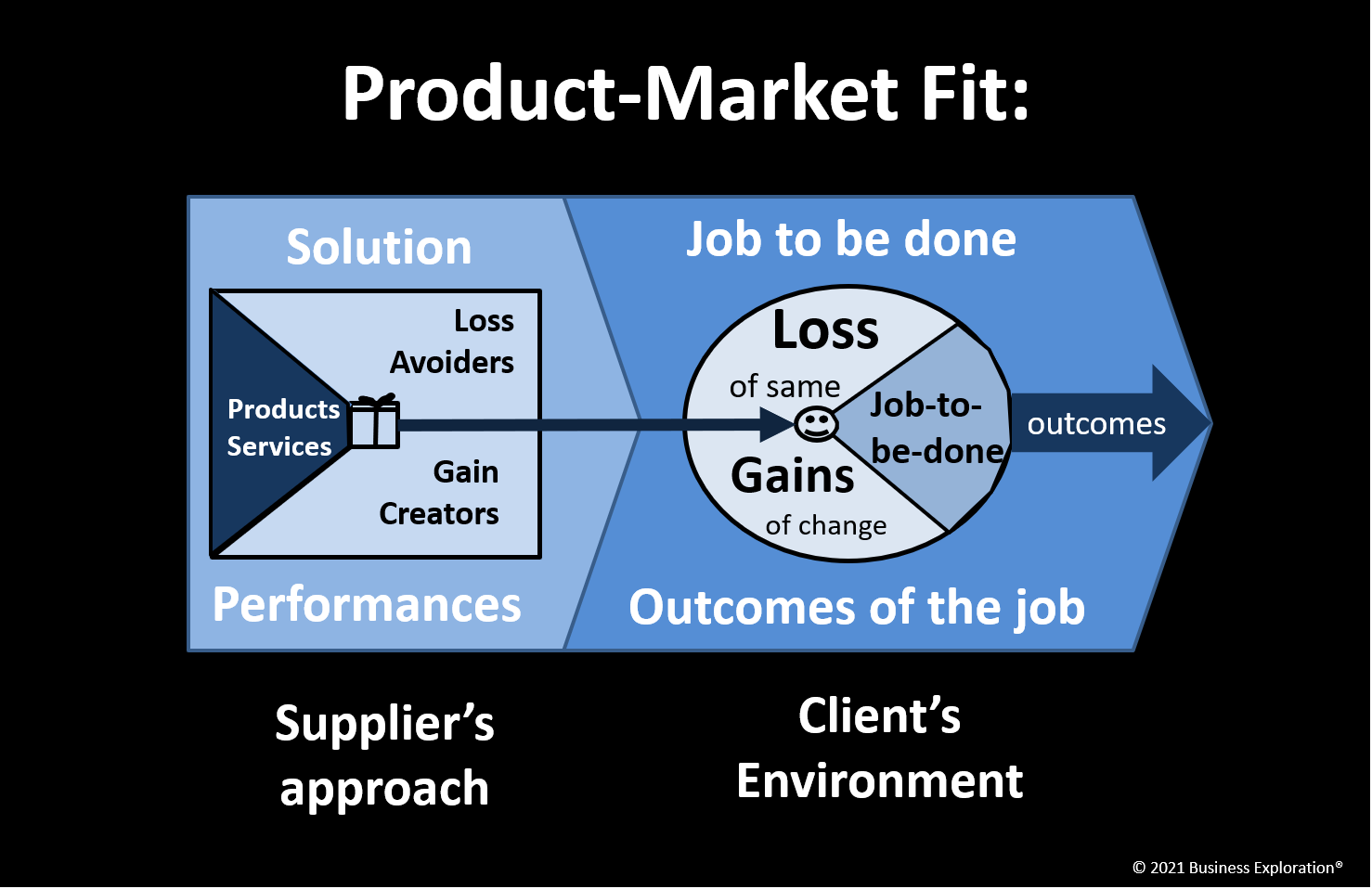
They way my services integrates with the client's company may vary. E.g.: I can deliver my consulting services in person or on-line. I can use training or coaching.
But what happens if I consider the way my services can integrate in the customer's Enviroment?
My approach can change. I can modify my consulting reports to suite not only my client's marketing function, but also to be used as intangible asset appealing possible Investors.
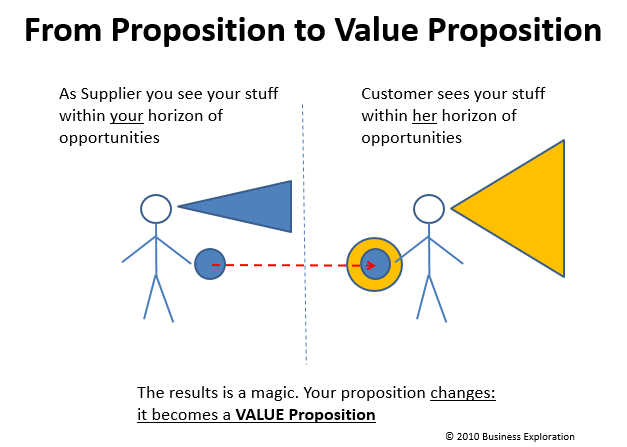
This is the meaning of "put yourself into customer's shooes". It's about looking at the solution we are offering from the customer point of view.
And the customer is not looking down to us. She is looking at her horizon.
More precisely: her horizon of opportunities. The Enviroment in which she is in, defines the opportunities she can invest on.
It is our job to uncover all the opportunities that our customer sees in her Enviroment, and bend
our approach so to support them.If our approach does not fit the Environment the customer is experiencing, she will choose the solution of someone else.
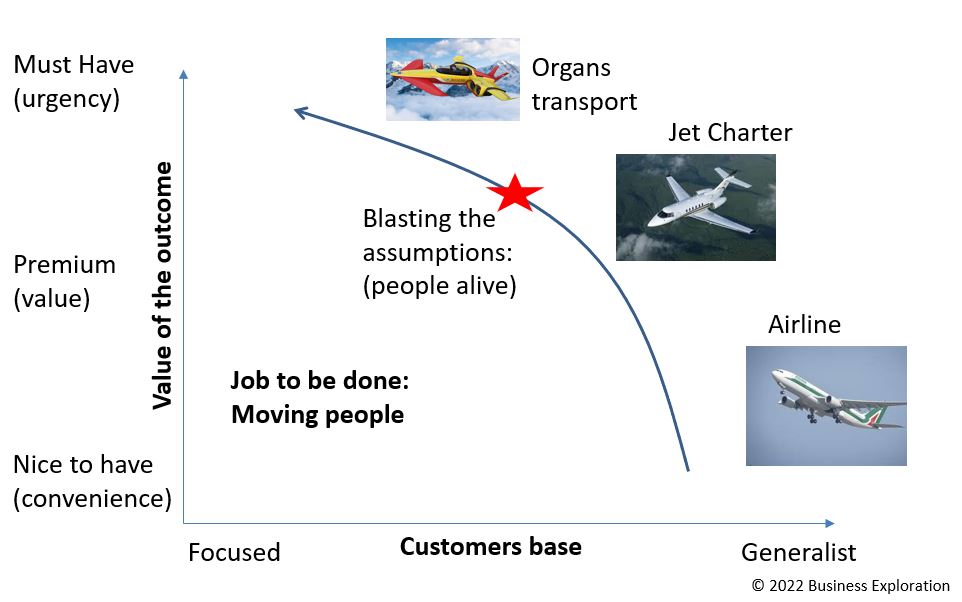
The final step is about refining the search for the best Customer Base for your solution.
You need:
Your Goal is to find the Focused Customers Base that Must buy your solution now.
This focused group of people, performing the job-to-be-done, desperately needing the outcome of the job - are the Customer Base you want to serve with your solution.
Note how between step 2 and 3, we were able to blast Customer's assumption: that the people should be alive.
Again, blasting customer's assumptions is the way to build the business case and sell.
This example is a real case happened to our friends of Manta Aircraft.
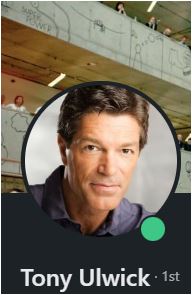
The following is a comment I made about (not) using behaviors as a driver for your Customer needs.
Tony Ulwick, the Author of "What Customer Wants" and inventor of the concept of Job-to-be-done has been so kind to put his "like" on it.
The difference between using Behaviors and a sound Job-to-be-done analysis to find what the customer wants...
it sounds like the difference between process and procedure:
a procedures describes activities ( ~behaviors )
a process describes decisions ( ~jobs )
with innovation you target jobs, not behaviors.
Behaviors, like activities of a procedure, can change,
while the job, like a process, has an output to produce, no matter the specific activities used.
You have the job to go from london to paris.
no matter with horses or a Ford T.
If you are Mr. Ford, you do not care of the behaviors of the coachman.
you care about the goal of the passenger.
Then, perhaps you may want to understand the specific purchasing behaviors of this gentlemen, to design a sales funnel that sells.
The problem with targeting behaviors, is that sometime the target, missbehaves...
i.e. does things that are in contrast of his goals.
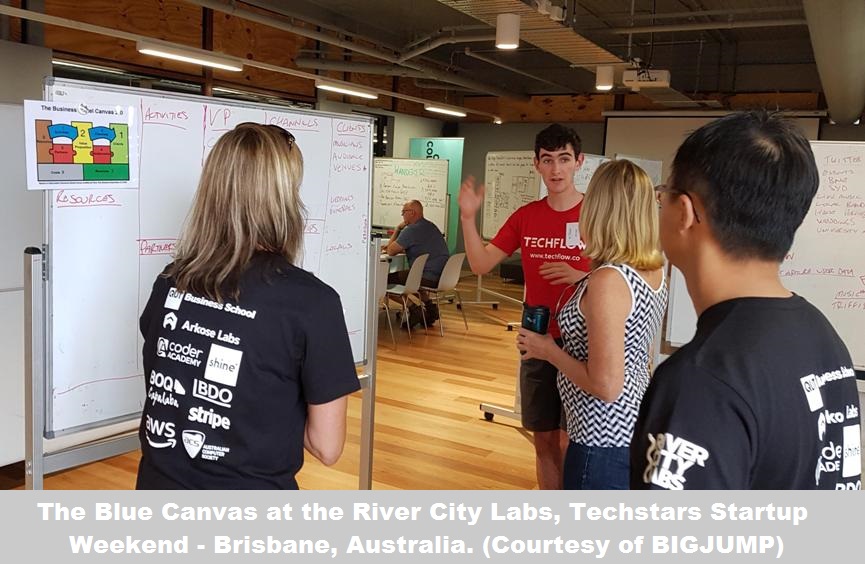
The Blue Canvas at The BigJump Business Modeling workshop
Brisbane - Australia
Launching a new product or service can easely become a mess:
Having a coach, bringing you down to a clear roadmap, equipped with the right models and tools, can avoid wasting money, time and a lot of energy that can be used to reach your market and sell now.
If this sounds familiar and it is a problem,
check if our workshop can be of help:
